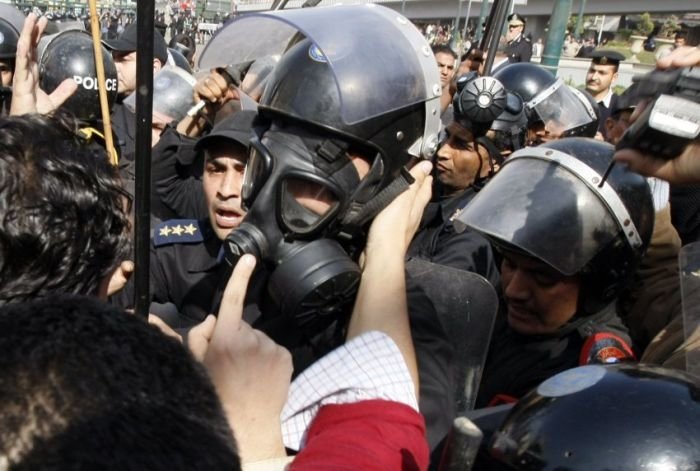The 2011 Egyptian Protests
|
Thousands filled the streets across Egypt on Friday 28 January, dubbed the Friday of Anger (Arabic: جمعة الغضب). It was also referred to as the "Day of Rage." Shortly before 1:00 am local time, hours ahead of the expected massive anti-government protests, the Egyptian government shut down internet services, although some people were still able to communicate using alternative means. Text messaging and mobile phone services also appeared to be blocked. All mobile phone operators in Egypt have been instructed to suspend services in selected areas. Under Egyptian legislation the authorities have the right to issue such an order and the operators are obliged to comply.
Shortly after Friday prayers, tens of thousands of Egyptians started protesting, and within hours the number rose to the hundreds of thousands. Potential presidential candidate Mohamed ElBaradei returned to Cairo and said that he planned to join the protesters. ElBaradei has been leading the protests in Giza. On 28 January ElBaradei was arrested at an anti-government rally and placed under house arrest. ElBaradei told Al Jazeera the next day that he was unaware of his house arrest.
Throughout the day, police fired tear gas, rubber bullets, and water cannons into crowds during violent clashes between authorities and anti-government protesters in Cairo, Alexandria, and throughout Egypt. Thousands in Suez stormed and took control of the police station, and then freed all protesters held under arrest there. In Port Said tens of thousands of protesters gathered and multiple government buildings were set ablaze. In Suez, police shot and killed at least one man taking part in the protests. The government issued a 6pm to 7am curfew, but protesters ignored it and were met by police tasked with enforcing it. In the evening, protesters set fire to one of the National Democratic Party (NDP) headquarters buildings in Cairo. While protesters paused for evening prayers, police continued firing tear gas.
The Egyptian government deployed military in Cairo, Alexandria, and Suez to assist the police. Protesters joined soldiers in protecting the Egyptian Museum, situated beside the burning ruling party headquarters. Al Jazeera also reported that in Suez the military wanted to avoid an openly armed confrontation with protesters. The same was reported in Alexandria.
|
|















